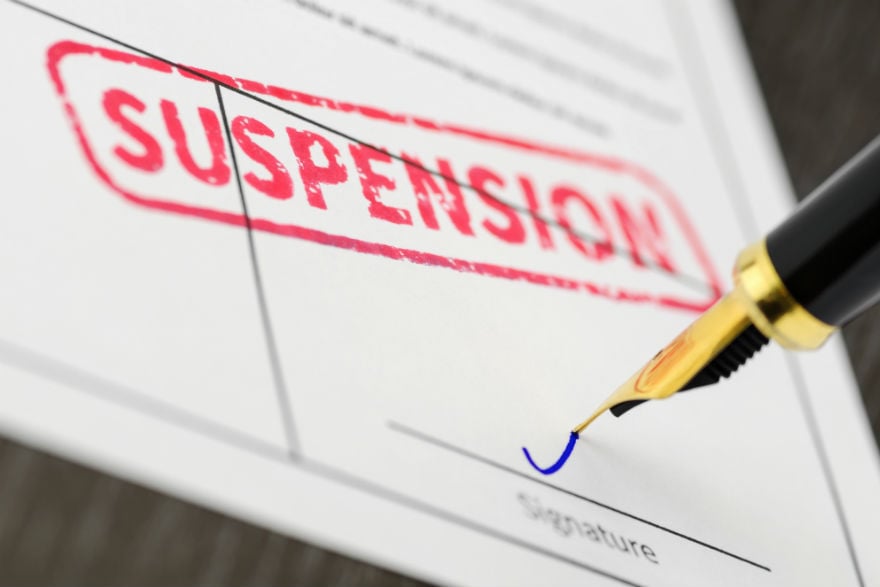As an Amazon seller, you’re fairly used to things going in a linear fashion: set up an account, upload your listings, draw in customers and their orders, and then package and ship items to them. Until one day it doesn’t — you log on to find out your Amazon account has been suspended. It’s a message no merchant wants to see, and yet it happens regularly. RepricerExpress takes an up-to-date look at why your account has been suspended and what you can do to get it back.
Reasons for Suspension
Amazon is far from being a perfect system, as it’s so big that occasionally mistakes slip through the cracks. But for the most part, they use algorithms to notify them when the following has taken place:
- Performance: When you first start out selling on Amazon, there are certain benchmarks you have to meet. If they feel you’ve been lagging, then they may suspend your account. This is to keep the marketplace competitive and not full of names who say they sell but don’t actually use the site.
- Violation: Any time you join any organisation you yourself didn’t start, there are always going to be certain rules and regulations you have to abide by. Amazon has theirs, and you showed an understanding of this when you signed up. If you broke these rules (either once or repeatedly, depending on the rule and severity), Amazon will suspend your account.
- Restricted Products: As an example, it’s a bit of a no-no to sell things like ivory or prescription medication on Amazon. They tend to frown on those sorts of items in their marketplaces, and you can guess that your account will be suspended if they’re linked back to you.
When your account’s been suspended, Amazon will tell you why. You can find this information in the Performance Notifications section of your account, as they’ll outline which of the three aforementioned categories you fall into.
What Steps to Take Next
The great thing about Amazon is they understand what it’s like to be an everyday merchant. They may not have the time nor the staff to sit down and chat with you over a coffee, but there are many steps you can take depending on which infraction has gotten your account suspended.
If it’s a violation-based suspension…then your obvious first step will be to take those items out of your inventory, post-haste. They can’t have you shipping ivory across country and continental lines, so make sure to take a look at what Amazon’s selling policies are and what you can and can’t sell.
If it’s a performance-based suspension…then you’ll need to examine why you’ve been lagging in this department. Do your packages regularly arrive after the date you said they’d be there? It may be time to re-examine your shipping process or go with Fulfilment by Amazon if you truly can’t handle both growing your business and taking care of the shipping side of it. Do your orders have a high defect rate? A good place to start sniffing around would be how you handle your inventory.
Show Amazon What You’re Capable of With a Plan of Action
As we mentioned before, Amazon’s pretty good about hearing you out if you want to appeal your suspension, but you have to show them you really mean business. You’ll need to assemble a plan of action that outlines you not only understand why your account was suspended, but what steps you’ll be taking to make sure it doesn’t happen again. It’s a good time to be as specific as possible and include some of the following general examples.
- If it’s a matter of not being able to get to your deliveries on time, tell Amazon how you have staff specially designated for orders alone and how your orders will all get taken care of each day. And because Amazon has a tier of shipping options, you’ll also want to mention how you’ll be triaging the orders to make sure expedited or Prime orders get out on time.
- If customers have repeatedly said you ignore their questions or complaints, Amazon will want to know how you’ll rectify this. They have customer support services available that can do this for you if you want to avail yourself of them, or you can just tell Amazon the details of how you’ll be getting back to customers (e.g. what time-frame, how you’ll handle different languages, etc.)
- If your order defect rate is high, it’s because you had a high pre-fulfilment cancellation rate that precipitated it. One of the biggest issues surrounding this is how you manage your stock, so be explicit in telling Amazon the steps you’ve taken to better control your inventory.
- If you’re selling items that are on Amazon’s do-not-sell list, then take them off right away. This is a non-negotiable and not open to any grey area, as they have to abide by many different laws, the likes of which trump what you may want to do as a merchant. If your supplier is giving you shady goods, like bootleg DVDs or counterfeit material, it’s a good time to start looking for another supplier (and also telling that to Amazon).
And then the waiting begins. You’ve put together a solid, awesome action plan that outlines all the steps you’ll be taking, but now the ball’s in Amazon’s court. Waiting will be the hardest part of it and while we don’t like to promise that a really hard effort won’t go unrewarded, it’s definitely something you can hope for. Just keep in mind that from now on, you’ll have to be a different, more improved Amazon merchant.
Final Thoughts
RepricerExpress understands how difficult it can be to be an Amazon merchant: you’ve got so much to worry about as a business owner that keeping track of everything can sometimes get the better of you. This post has taken care of one possible scenario, while our repricing software can tend to another. Once you’ve got your Amazon account back on the path you want, check out our free 15-day trial to see what new heights you can reach for.



